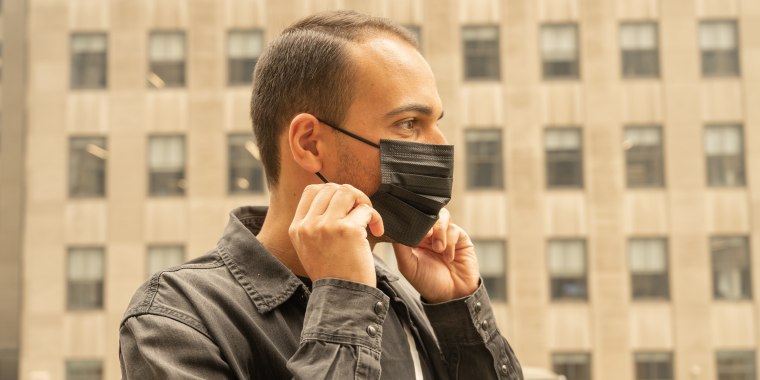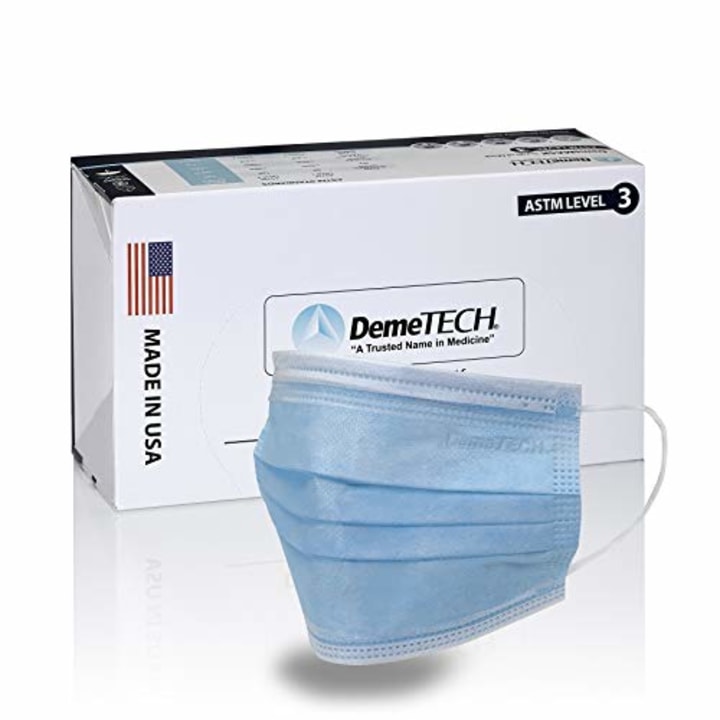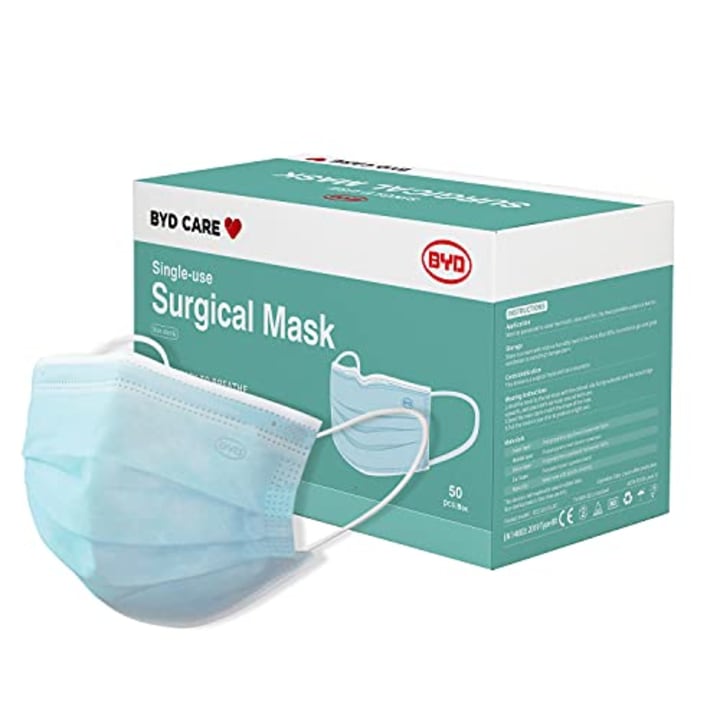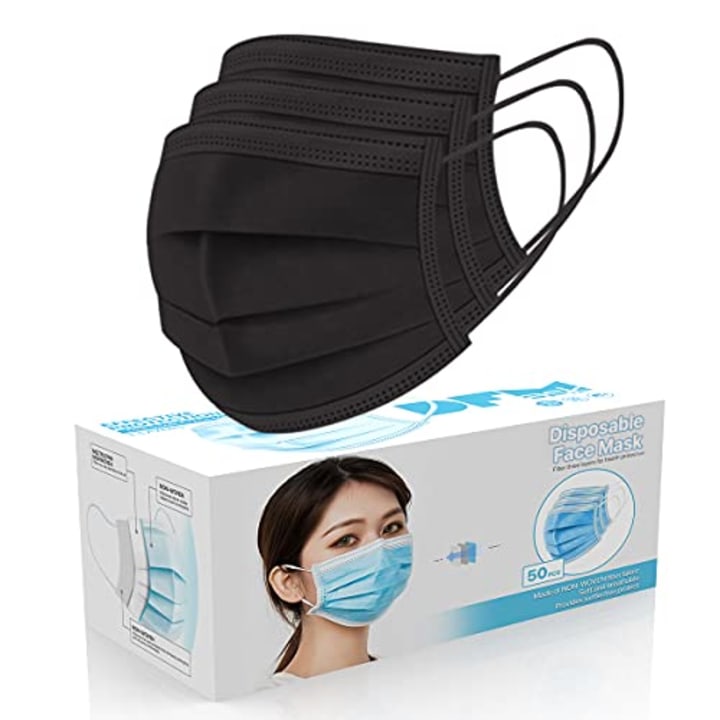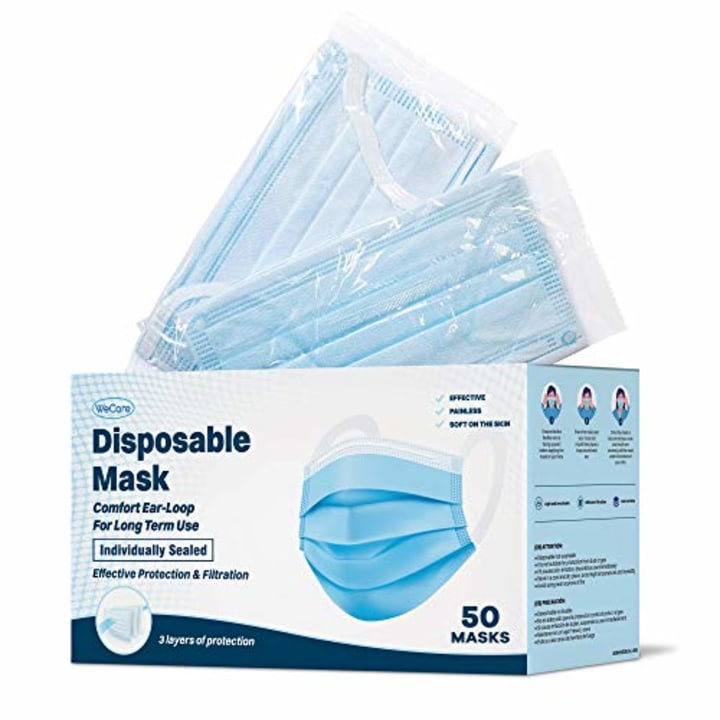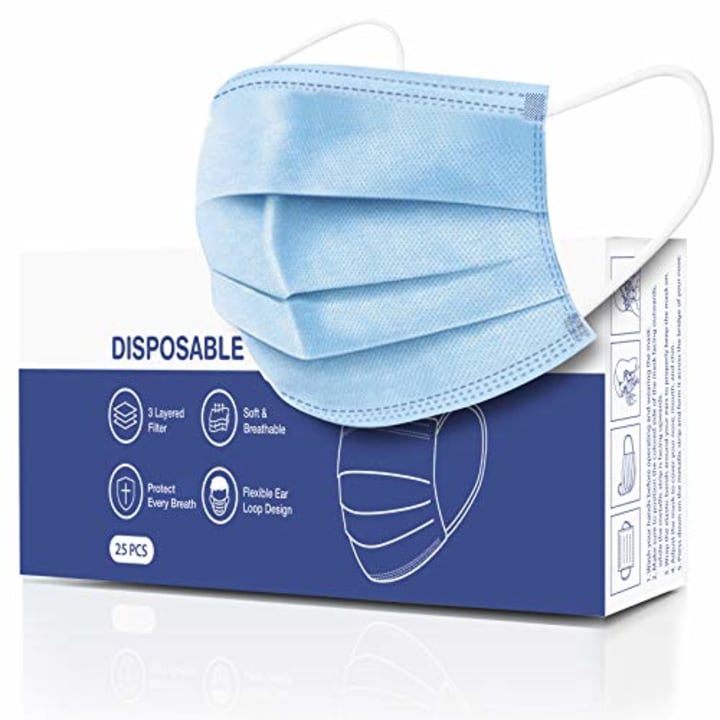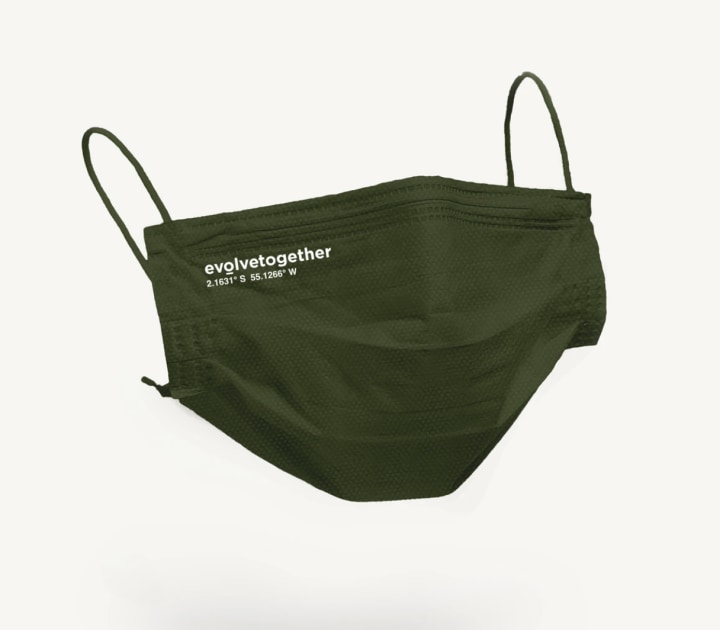Many people are currently restocking their face masks supply due to concerns about spiking COVID cases. And there are many options to choose from, like reusable cloth masks, disposable masks, respirators and even gaiters.
In its guide to masks and respirators, the Centers for Disease Control and Prevention says respirators — among them N95 and KN95 face masks — offer more protection than cloth masks. (Most people use “mask” and “respirator” interchangeably, but when the CDC and medical professionals say “respirator,” they specifically mean specialized, fitted face coverings like N95s, KN95s and KF94s.)
Highest level of protection: Well-fitting respirators approved by the National Institute for Occupational Safety & Health (NIOSH), including N95s
Less protection than NIOSH-approved respirators: Well-fitting disposable surgical masks and KN95s
Less protection than non-NIOSH respirators and surgical masks: Layered, finely woven products
Least protection (but still better than not wearing a mask at all): Loosely woven cloth products
Despite respirators offering the most protection, some people don’t find this type of disposable face covering comfortable, like kids or those with smaller faces, for example. And since the CDC says that ultimately, any mask is better than no mask at all, you may opt for another option, like a medical-grade or nonmedical-grade disposable mask.
If you’re trying to decide which type of disposable mask is right for you, we talked to experts about the differences between each option, who should wear them and how to shop for them.
SKIP AHEAD The best medical-grade disposable masks | The best nonmedical-grade disposable masks | Medical-grade v.s. nonmedical-grade | How disposable masks work | How to wear a mask | Why wear a mask?
Our top picks
- Best medical-grade disposable face mask: DemeTECH ASTM Level 3 Face Masks
- Best non-medical grade disposable face mask: PM Performotor Disposable Face Mask
- Editor's pick: Evolvetogether Disposable Face Mask
How we picked the best disposable face masks
When it comes to shopping for disposable face masks, experts suggest considering the following factors:
Medical-grade versus nonmedical-grade: Medical-grade face masks are regulated by the Food and Drug Administration and must meet strict criteria in order to be considered medical devices. Nonmedical-grade face masks, on the other hand, are not regulated by the FDA, as they are not intended for use in medical settings, says Dr. Jeannie Kenkare, chief medical officer and co-founder of Northeast-based PhysicianOne Urgent Care. Experts tell us that nonmedical-grade disposable masks are a fine option for the general public. But if you're in a high-risk group, you may want to consider opting for medical-grade disposable masks since they offer a guaranteed level of protection.
Fit: Disposable masks should fit tightly around your nose, mouth and chin so they create a seal against your face to prevent leaks.
Features: The CDC recommends buying disposable face masks that are made from multiple layers of material — experts tell us your mask should be at least two-ply, but three-ply is ideal. Masks should also have a nose wire, and experts say you can look for options that have an inner lining with moisture-wicking and antibacterial properties. Be sure you do not buy masks with exhalation valves.
Price: Experts say you shouldn't sweat price points too much, as more expensive disposable masks don’t guarantee better protection.
Best medical-grade disposable face masks to buy
The FDA does not maintain a list of surgical mask suppliers. However, Linsey Marr, a professor of civil and environmental engineering at Virginia Tech, suggests looking for products that say they're ASTM Level 1, 2 or 3 on the package. “This means the mask can filter out at least 95% of particles of all sizes, and at least 98% for Levels 2 and 3,” she says.
If you’re looking to purchase a medical-grade disposable mask, Marr says the difference among ASTM Levels 1, 2 and 3 “is probably not significant for everyday use, where fit is more important.” In other words, a leaky surgical mask — one that fits your face poorly and has gaps along the sides and top — is not effective.
To recommend the below medical-grade disposable masks, we rounded up highly rated options that align with expert guidance and have features the CDC says to look for while shopping.
DemeTECH ASTM Level 3 Face Masks
Built with three layers of fabric, these surgical masks have an adjustable nose bridge and ear loops. They come in a box of 50 masks.
BYD Care ASTM Level 3 Face Masks
These surgical masks come in a box of 50 and are designed with three layers of nonwoven fabric. They feature an adjustable nose bridge and ear loops.
Best nonmedical-grade disposable face masks to buy
To recommend the below nonmedical-grade disposable masks, we rounded up highly rated options that align with expert guidance and have features the CDC says to look for while shopping.
PM Performotor Disposable Face Mask
These face masks are constructed from three layers of nonwoven fabric and have an adjustable nose bridge and elastic ear loops. You can purchase them in sets of 50 or 100, as well as colors like black and pink. The masks also come in patterns and individually wrapped options.
WeCare Disposable Face Mask
WeCare’s disposable face masks come individually wrapped. They’re made from three layers of nonwoven fabric and have an adjustable nose bridge. You can purchase packs of 50 masks in colors and prints like black, red and jaguar.
CandyCare Disposable Face Masks
You can purchase CandyCare’s disposable face masks in packs of 25 to 2,000. They’re built with three layers of fabric, an adjustable nose bridge and ear loops.
Evolvetogether Disposable Face Mask
Available in packs of seven or 30, Evolvetogether’s disposable face masks come in colors like Tokyo (gray), Amazonia (green) and Milan (black). They’re designed with three layers of fabric, an adjustable nose bridge and ear loops. The masks come with two mask keepers, which you can use to store masks when you’re not wearing them. The masks’ packaging is made from biodegradable and recyclable materials, according to Evolvetogether.
WellBefore Disposable Face Masks
WellBefore’s disposable face masks can be purchased with ear loops, adjustable ear loops or an adjustable head strap. They’re made from three layers of fabric and have an adjustable nose strip. The masks are available in multiple colors like blue, black and burgundy. You can order as few as 10 masks to over 1,000. Masks come individually wrapped.
Medical-grade versus nonmedical-grade disposable masks
There are two types of disposable face masks: Medical-grade (also referred to as surgical masks or medical procedure masks) and nonmedical-grade. And “while all surgical masks are considered face masks, not all face masks are considered surgical face masks,” says Dr. Jay Woody, chief medical officer of Intuitive Health and a co-founder of Legacy ER & Urgent Care. Below, we broke down the difference between each type of disposable mask to help you decide which is right for your needs.
Medical-grade disposable face masks
Medical-grade disposable face masks are regulated by the FDA and must meet strict criteria in order to be considered medical devices. They're not the same thing as N95 respirators, which are regulated by the National Institute for Occupational Safety and Health.
The FDA notes that the edges of surgical masks “are not designed to form a seal around the nose and mouth.” The masks filter out large particles — which are bigger than very small particles in the air that may be transmitted by coughs or sneezes — and protect the wearer’s nose and mouth from contact with splashes or sprays that might contain germs, Kenkare says. To compensate for surgical masks’ loose fit, the CDC recommends using a fitter or brace like Fix the Mask.
Experts we consulted don’t specifically recommend medical-grade disposable face masks for the general public except for those in a high-risk category, which the World Health Organization defines as those over 60 or with underlying health conditions such as chronic respiratory disease, cancer or obesity. And unlike at the beginning of the pandemic, medical-grade disposable face masks are more readily available, so if you’re interested in purchasing them, you can find them at many retailers and pharmacies.
Nonmedical-grade disposable face masks
Nonmedical-grade disposable face masks look like surgical masks but they are not regulated by the FDA since they are not intended for use in medical settings, Kenkare says. They offer varying levels of filtration, and you can find them in different sizes and styles.
Nonmedical-grade disposable masks typically come in two- or three-layer builds, experts tell us. They’re a fine option for the public if they’re available in your area, says Dr. Ellen Turner, an infectious diseases physician and adjunct professor at Drexel University College of Medicine in Philadelphia.
How do disposable masks work?
Disposable face masks protect those around the wearer by blocking virus particles from entering the air, thus decreasing the chance that someone infected with Covid will spread the virus, says Dr. Carl Fichtenbaum, a professor of clinical medicine at the University of Cincinnati College of Medicine. To some extent, they also help shield what the wearer breathes in. And the masks can prevent wearers from touching a contaminated surface and then touching their eyes, mouth or nose, Woody says.
Because nonmedical-grade disposable masks are not regulated by the FDA, there is no uniform design standard they follow, but most have at least two layers. Medical-grade masks, however, are regulated by the FDA and adhere to specific standards. The outer layer is typically water-repellent to protect against large droplets, the middle layer usually has an antibacterial filter and the inner layer is designed to absorb moisture from the breath and minimize skin irritation, says Dr. Manisha Singal, a board-certified internal medicine physician and chief medical officer of Bridgepoint Hospital in Washington, D.C, where she is a critical care physician.
How to wear a disposable mask
A face mask will not protect you or the people around you unless you wear it correctly. The CDC recommends making sure it completely covers your mouth and nose and fits tightly against your face to prevent gaps around the sides of the mask, nose and chin. You also should not wear any mask with exhalation valves or vents, according to the CDC.
All masks fit differently, and features like adjustable ear loops and an adjustable nose bridge help you improve the fit of your mask, as do mask fitters or braces, according to the CDC. Using a fitter or brace is especially a good idea for people with facial hair, which can make it difficult to achieve a tight fit.
Another way to improve the fit of certain face masks is to double-mask, or wear a disposable mask underneath a reusable cloth mask. It’s important to note that the CDC advises against double-masking while wearing respirators, and you should not wear two disposable masks.
Are disposable masks reusable?
What medical-grade face masks, nonmedical-grade face masks and respirators all have in common is that they’re designed to be single-use face coverings. That doesn’t actually mean you have to toss your mask after a single use, however. Depending on the mask and how long you wear it for, it can be worn multiple times if you remove and store it properly: Take off the mask by its straps and wash your hands immediately afterward, and then store it in a clean paper or plastic bag. Be sure to replace your disposable face mask if it becomes wet or visibly dirty.
Why wear a face mask? Do face masks protect others against Covid or just the wearers?
To recommend when Americans should wear face masks, the CDC determines an area’s Covid-19 Community Level risk on a scale of low, medium or high. To do so, it analyzes how many Covid-related hospital beds are in use, hospital admissions and the total number of new Covid cases in that area. Each Covid-19 Community Level corresponds to a masking recommendation — suggested precautions increase alongside the level. To determine your area’s Covid-19 Community Level, use the CDC's Covid-19 county check.
The CDC’s order requiring masks on public transportation and at transportation hubs is no longer in effect, and airlines no longer have mask mandates. However, the CDC says it “continues to recommend that people wear masks in indoor public transportation settings,” despite being unable to enforce any rules. Before you use a specific public transportation system in your area, be sure to double-check its mask requirements as they can change at any time.
Experts repeatedly stress that masks help reduce the risk of viral transmission. One 2021 CDC study found that, between two properly masked or double-masked people, the risk of one giving the other a virus was cut by over 95 percent. Masking up also protects other people, as demonstrated in numerous studies like these gathered by the CDC.
Meet our experts
At Select, we work with experts who have specialized knowledge and authority based on relevant training and/or experience. We also take steps to ensure that all expert advice and recommendations are made independently and with no undisclosed financial conflicts of interest.
Dr. Jay Woody is the chief medical officer of Intuitive Health and a co-founder of Legacy ER & Urgent Care.
Jeannie Kenkare, DO, is the chief medical officer and co-founder of Northeast-based PhysicianOne Urgent Care.
Linsey Marr is a professor of civil and environmental engineering at Virginia Tech University.
Dr. Carl Fichtenbaum is a professor of clinical medicine at the University of Cincinnati College of Medicine
Dr. Manisha Singal is a board-certified internal medicine physician and chief medical officer of Bridgepoint Hospital in Washington, D.C, where she serves as a critical care physician.
Why trust NBC Select?
Zoe Malin is an associate updates editor who has covered face masks for Select since 2020. She's written about disposable masks, KN95 masks, N95 masks and KN95 masks for kids, in addition to at-home Covid tests and vaccine card holders. For this article, Malin spoke to five experts about how to shop for disposable face masks and when people should wear them.
Catch up on Select’s in-depth coverage of personal finance, tech and tools, wellness and more, and follow us on Facebook, Instagram, Twitter and TikTok to stay up to date.
